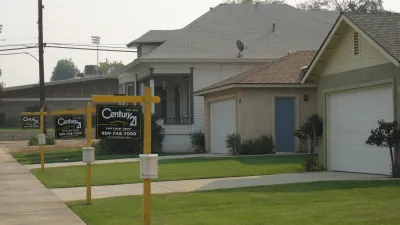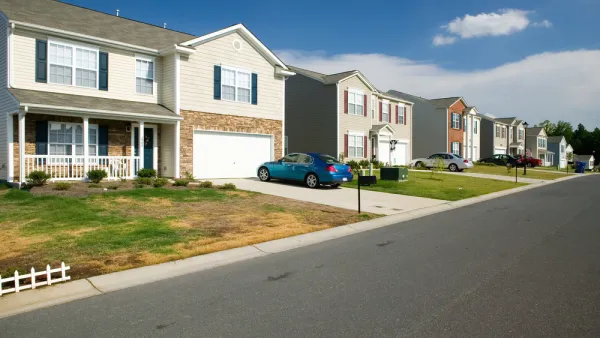Housing prices dropped slightly last year, but first-time and middle-income buyers found little price relief due to the “lock-in effect” of the historically low interest rates in effect for more than a decade prior to 2022.

Writing for a paywalled article at Fortune, Lance Lambert describes the conflicting forces driving the housing market in 2023:
On one side, deteriorated affordability resulting from a spike in mortgage rates from 3% to over 6% in 2022, just after national home prices surged by more than 40% during the Pandemic Housing Boom, is exerting downward pressure on home prices. On the other side, the scarcity of existing inventory, exacerbated by the “lock-in effect,” as many homeowners are reluctant to sell and buy anew, fearing the tradeoff from a 2% or 3% mortgage rate to one in the 6% to 7% range, is exerting upward pressure on home prices.
According to data from the Federal Reserve Bank of Atlanta, the housing market was more expensive than any point since the height of the housing bubble in 2006 before rising interest rates produced a housing price correction last fall. The correction hasn’t been deep enough to bring large numbers of buyers into the market, however, due to the ongoing mismatch between supply and demand and a relative lack of affordable housing options on the market.
Also, the increasing interest rates have further reduced the number of homes on the market, the “lock-in effect” describes the hesitation of potential home sellers to double their interest rates.
“To better understand the lock-in effect, consider the fact that 91% of mortgage borrowers have an interest rate below 5%, including 70.7% with an interest rate below 4%. For those homeowners, it simply doesn't make a lot of sense to sell and purchase a property right now at a 6% or 7% mortgage rate,” adds Lambert. The lock-in effect is obviously having an effect, too. “According to Realtor.com, there were 26.2% fewer homes listed for sale In June 2023 than in June 2022, and 28.9% fewer than in June 2019,” reports Lambert.
Zillow and CoreLogic are both predicting that housing prices have already hit bottom and will continue to increase over the next few years. Analysts at those firms argue that the lack of inventory will overpower price decreases. “The scarcity of existing inventory, they say, leaves buyers with no choice but to drive prices higher,” reports Lambert.
FULL STORY: A fight erupts in U.S. housing market as deteriorated affordability clashes with the ‘lock-in effect’

Analysis: Cybertruck Fatality Rate Far Exceeds That of Ford Pinto
The Tesla Cybertruck was recalled seven times last year.

National Parks Layoffs Will Cause Communities to Lose Billions
Thousands of essential park workers were laid off this week, just before the busy spring break season.

Retro-silient?: America’s First “Eco-burb,” The Woodlands Turns 50
A master-planned community north of Houston offers lessons on green infrastructure and resilient design, but falls short of its founder’s lofty affordability and walkability goals.

Test News Post 1
This is a summary

Analysis: Cybertruck Fatality Rate Far Exceeds That of Ford Pinto
The Tesla Cybertruck was recalled seven times last year.

Test News Headline 46
Test for the image on the front page.
Urban Design for Planners 1: Software Tools
This six-course series explores essential urban design concepts using open source software and equips planners with the tools they need to participate fully in the urban design process.
Planning for Universal Design
Learn the tools for implementing Universal Design in planning regulations.
EMC Planning Group, Inc.
Planetizen
Planetizen
Mpact (formerly Rail~Volution)
Great Falls Development Authority, Inc.
HUDs Office of Policy Development and Research
NYU Wagner Graduate School of Public Service




























